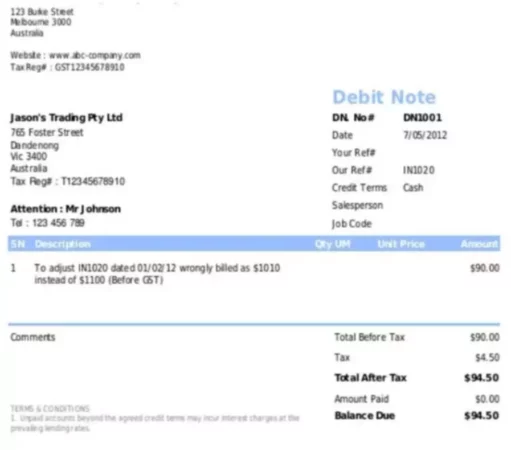Overview
When dealing with merchandise inventory, some of the new terminology you might come across is debit and credit memo. What exactly does a debit memo mean? When a buyer purchases something from a business on a credit, both make records in the accounting books. The seller will have an Accounts receivable account and the buyer will have an Accounts payable account.
Now, let’s assume the customer wants to return defective equipment they purchase from the business. When the equipment is returned, the seller credits the buyer’s Accounts receivable to reflect in the books that the customer no longer owes anything. At the same time, the seller sends a credit memo to the buyer just to let them know that they have credited the buyer’s account.
When the buyer receives a credit memo, they debit (do the opposite) the accounts payable to reduce their liabilities. To acknowledge a receipt of the credit memorandum, the customer can issue a debit memo to the seller. Thus, the definition of a debit memo is very simple. It is a source document and a way of communication between the seller and the customer.
So, if the buyer wants to communicate with the seller that they are decreasing the accounts payable, they then send a debit memorandum. Note that if you issue a memo, that is what you do (credit or debit the appropriate account), but if you receive a memo, you do the opposite (credit an account if you get a debit note).
There are other uses of this term in the financial world. It can refer to an informal invoice from a supplier showing an additional amount due. This is a rather rare use of such way communication with the customer because bookkeepers usually issue a new invoice or create an invoice just for the money owed.
An entity can issue a debit memo when it feels an error has been made. A debit memo on the bank statement means a deduction from the balance on the bank account for services provided by the bank to the customer, a fee for a bounced check, or payment for issuing of check stock. As you can see, there are various applications of this term and you might come across other uses of it.
Example
Above you can see an example of a debit memorandum. In this case, the company issued a debit memo to note an incorrectly billed previous invoice. According to this invoice, the customer still owes $90 for the products it purchased from this company or a job completed in addition to taxes on this purchase. The balance still due equals $94.50.



















